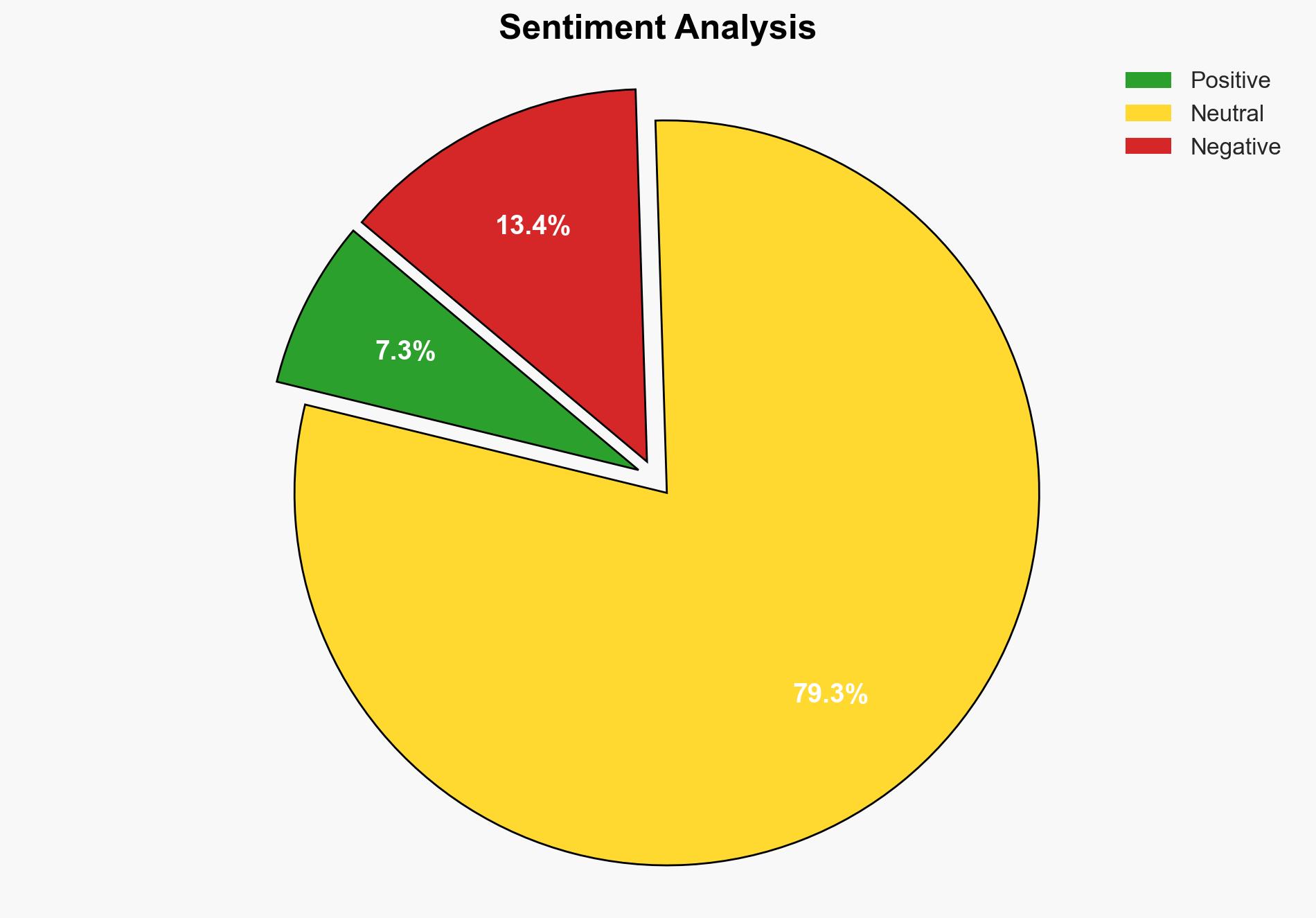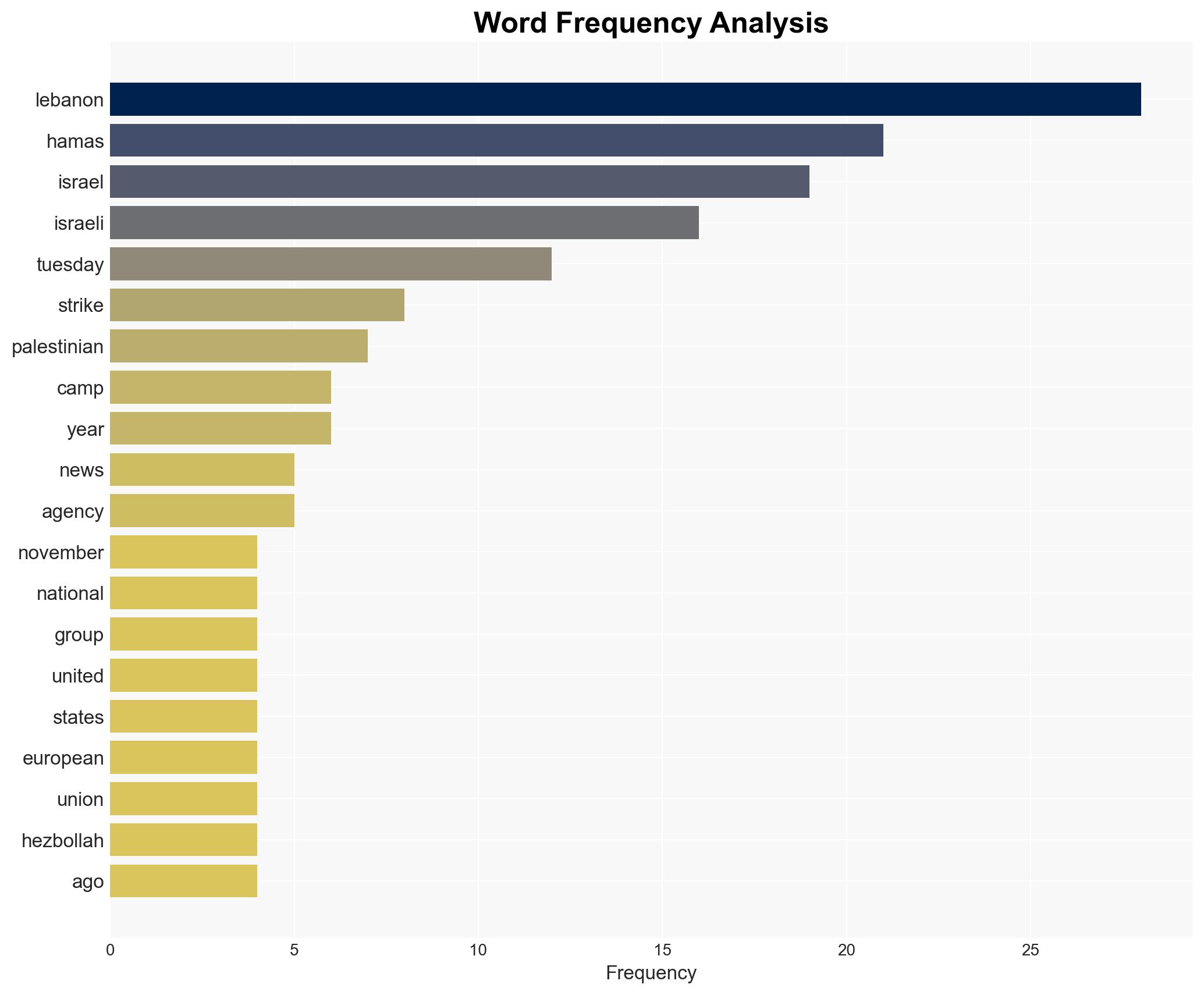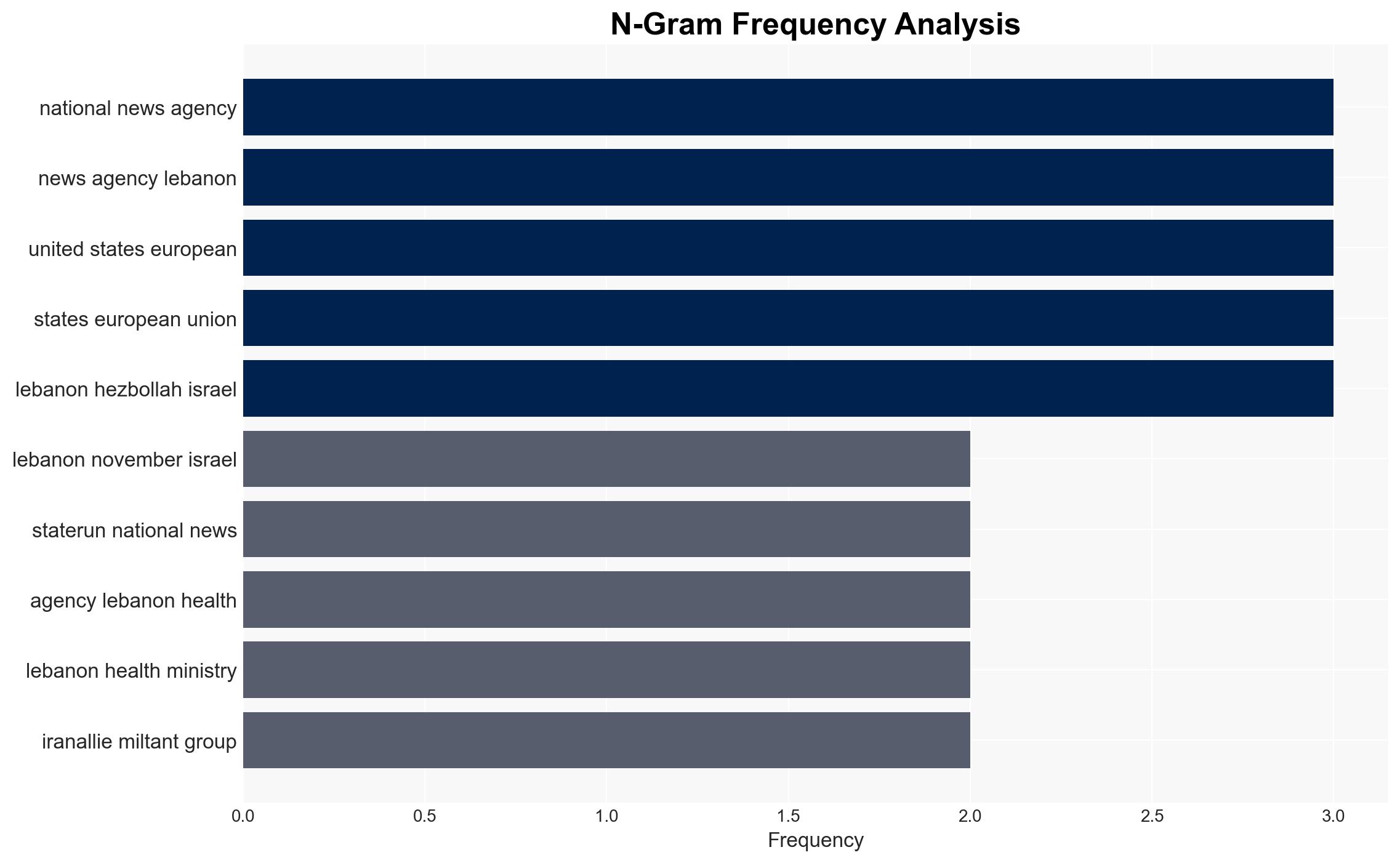Israeli strikes on refugee camp killed 13 says Lebanon – DW (English)
Published on: 2025-11-19
AI-powered OSINT brief from verified open sources. Automated NLP signal extraction with human verification. See our Methodology and Why WorldWideWatchers.
Intelligence Report: Israeli Strikes on Refugee Camp
1. BLUF (Bottom Line Up Front)
With a moderate confidence level, the most supported hypothesis is that the Israeli strike targeted a legitimate Hamas compound within the Ein el-Hilweh refugee camp, despite public denials by Hamas and Lebanese authorities. The strategic recommendation is to enhance intelligence-sharing mechanisms with regional allies to verify claims and prevent misinformation.
2. Competing Hypotheses
Hypothesis 1: The Israeli strike targeted a legitimate Hamas compound within the refugee camp, aligning with Israel’s claims of targeting Hamas operatives preparing for attacks.
Hypothesis 2: The strike was a miscalculation or based on faulty intelligence, resulting in civilian casualties and no significant Hamas presence, as claimed by Lebanese sources.
Hypothesis 1 is more likely due to Israel’s historical pattern of targeting Hamas operatives and the strategic importance of preemptive strikes. However, the lack of independent verification and restricted media access introduces uncertainty.
3. Key Assumptions and Red Flags
Assumptions: Israel has reliable intelligence on Hamas activities within the camp. The Lebanese state media reports are unbiased.
Red Flags: Restricted media access to the site, conflicting reports from involved parties, and the potential for propaganda use by both sides.
Deception Indicators: Hamas and Lebanese authorities may downplay or deny Hamas presence to avoid further escalation or international scrutiny.
4. Implications and Strategic Risks
The incident could escalate tensions between Israel and Lebanon, potentially involving Hezbollah, which may retaliate or increase support for Hamas. This could destabilize the region further and impact international diplomatic efforts. Cyber and informational warfare could intensify as both sides seek to control the narrative.
5. Recommendations and Outlook
- Enhance intelligence-sharing with regional allies to verify claims and counter misinformation.
- Engage in diplomatic channels to de-escalate tensions and prevent further military engagements.
- Best-case scenario: Verification of claims leads to reduced tensions and a diplomatic resolution.
- Worst-case scenario: Escalation into broader conflict involving Hezbollah and regional actors.
- Most-likely scenario: Continued low-intensity conflict with sporadic military engagements and diplomatic efforts to manage tensions.
6. Key Individuals and Entities
Israel: Israeli Defense Forces (IDF)
Lebanon: Lebanese Government, National News Agency
Hamas: Leadership within the Ein el-Hilweh camp
Hezbollah: Potential involvement as a regional actor
7. Thematic Tags
Structured Analytic Techniques Applied
- ACH 2.0: Reconstruct likely threat actor intentions via hypothesis testing and structured refutation.
- Indicators Development: Track radicalization signals and propaganda patterns to anticipate operational planning.
- Narrative Pattern Analysis: Deconstruct and track propaganda or influence narratives.
Explore more:
Counter-Terrorism Briefs ·
Daily Summary ·
Support us





